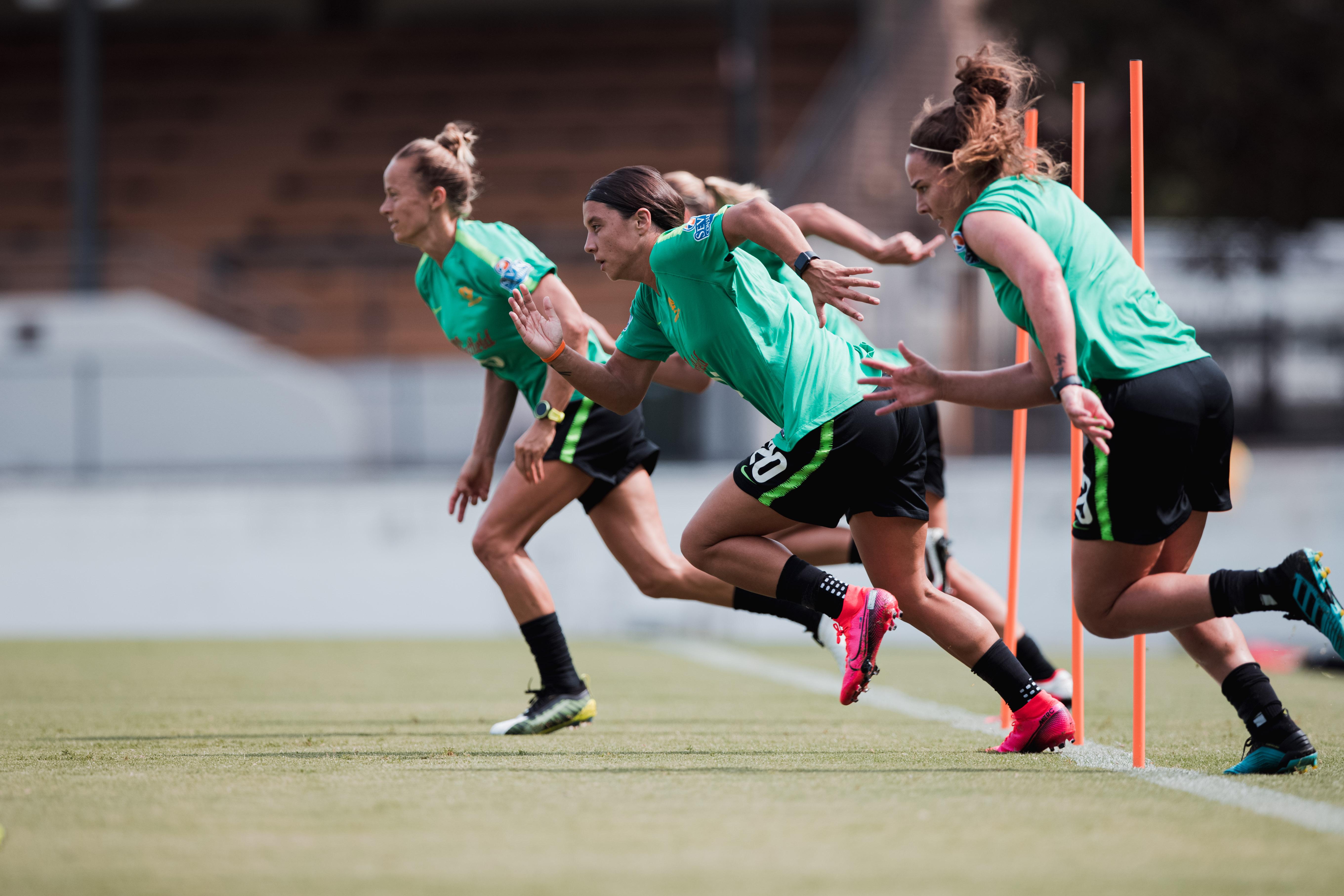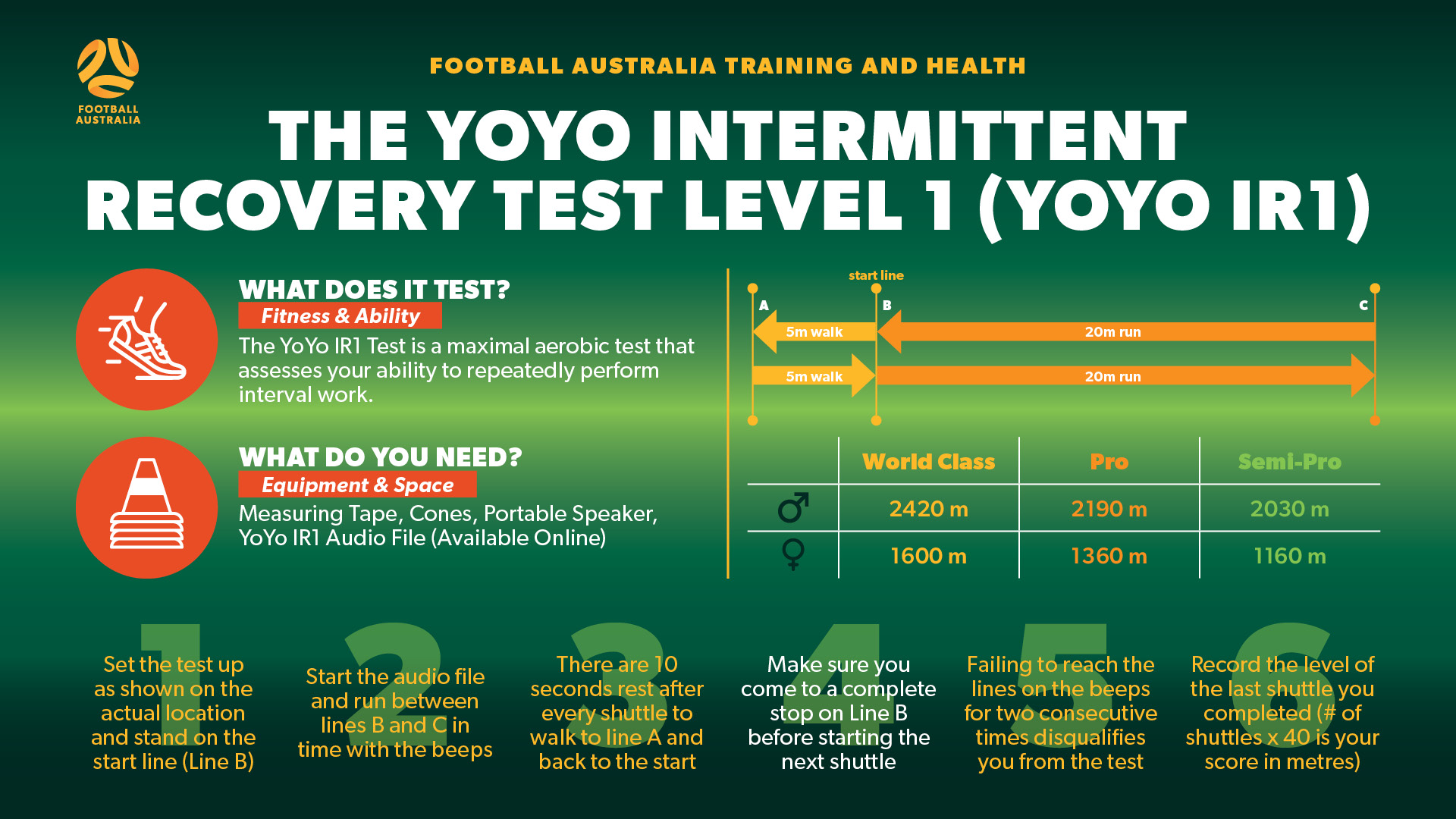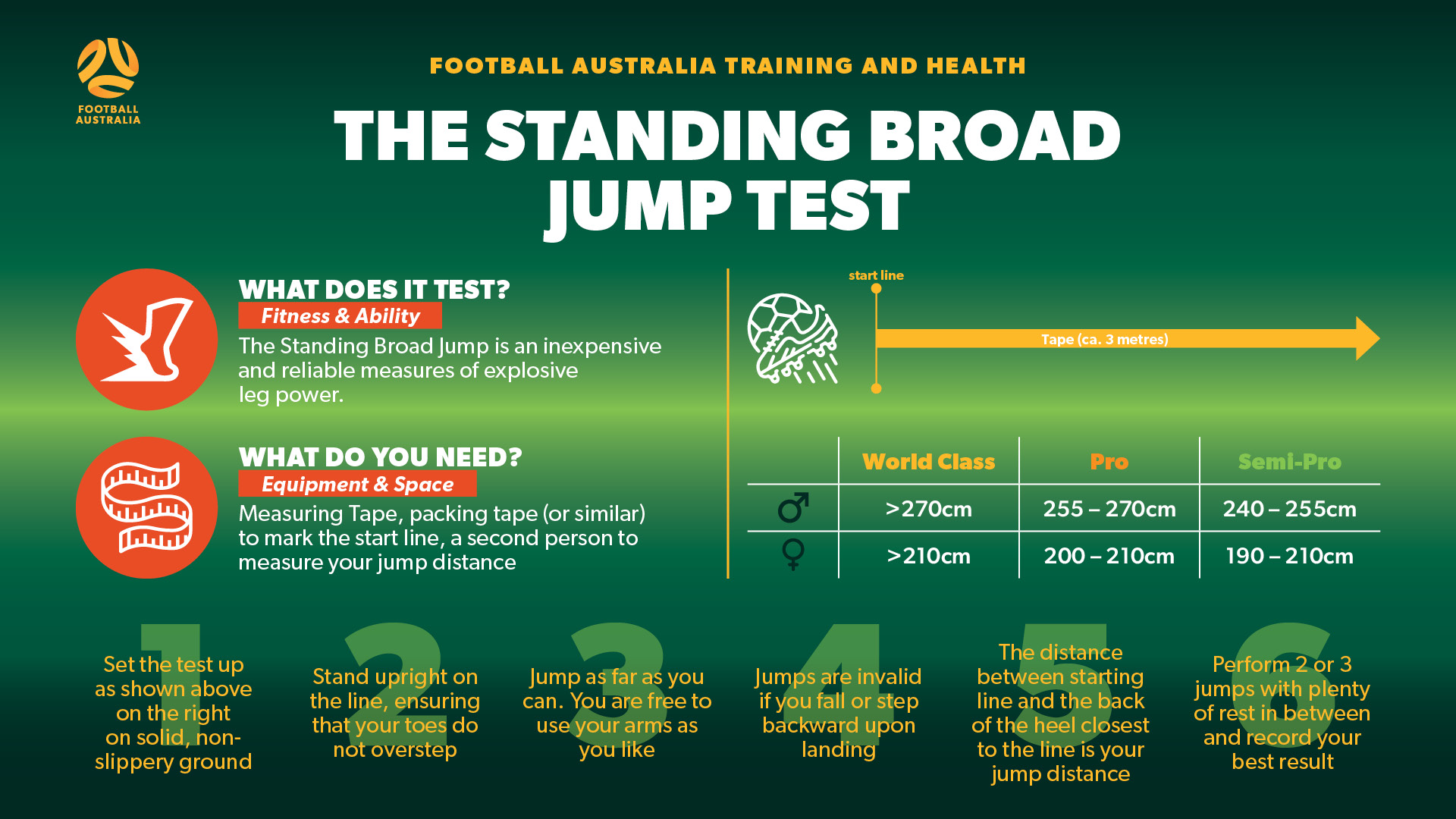EXERCISE TESTING
Physical qualities contribute significantly to performance and can be a distinguishing factor at all levels of football [1, 2]. Your ability to outpace an opponent, jump higher than them or run further in the dying moments of a match can be the difference between winning, drawing or losing. Physical aspects of performance must therefore be developed alongside technical, tactical and psychological qualities and one way to ensure these qualities are developed adequately is exercise testing.
Exercise tests are designed to isolate and assess specific physical qualities and can answer many questions for coaches; what are a player’s strengths and weaknesses, is their training program improving their physical qualities and are they capable of doing what they are expected to do in a match (not all playing styles and positions require equal physical work)?
Australian national team players are tested regularly to assess their endurance, power and strength amongst other qualities. Many Socceroos and Matildas players have been tested for several years and Football Australia’s performance staff use the information collected to guide these players to peak physical performance levels, regardless of where they are at in their professional career.

Many of the tests national team players perform can easily be conducted at home or at the local park and Football Australia provide reference values for both male and female players across all ages where possible. To perform these tests at home, it is important to carefully consider the following aspects:
Exercise tests can pose a small risk of injury or other harm. It is advisable to conduct all tests under supervision, complete a pre-exercise screening questionnaire (see suggested reading below) and consult a doctor if there are any concerns about performing maximal efforts.
An adequate warm-up will reduce the risk of muscle injuries during testing.
To compare testing results to reference values or over multiple testing dates, tests must be conducted in a standardised and reliable manner. All tests should be set up exactly as instructed and testing conditions must be replicated as closely as possible when retesting (consider the time of the day, proximity to last match, environmental conditions, testing surface, warm-up, etc.).
|
It is important to not get discouraged by exercise test results. There are many reasons why you may perform poorly in a particular test compared to your peers or to the Football Australia reference values provided, including your growth and maturation status. Even at the highest level, players display a great range of physical characteristics and all players compensate for relative weaknesses with strengths in other areas, be it physical, technical or mental, to some degree. The true purpose of exercise testing is to guide you towards fulfilling your physical potential to benefit your on-field performance. Strength training and on-field conditioning can help improve your physical performance. |
Use the infographics below to test yourself at home and start tracking your training progress.


Suggested Reading
- Jens Bangsbo is the inventor of the YoYo Test. His book “Fitness Testing in Football”, co-written with Magni Mohr, explains this test and many others and offers normative values across a range of athletes. He also provides an excellent website that collates information on all variations of the YoYo Test.
- Exercise and Sports Science Australia provide an “Adult Pre-Exercise Screening System” via their website.
References
- J. Ingebrigtsen, M. Bendiksen, M. B. Randers, C. Castagna, P. Krustrup and A. Holtermann, “Yo-Yo IR2 testing of elite and sub-elite soccer players: performance, heart rate response and correlations to other interval tests,” Journal of Sports Sciences, vol. 30, no. 13, pp. 1337-1345, 2012.
- A. Trecroci, S. Longo, E. Perri, F. M. Iaia and G. Alberti, “Field-based physical performance of elite and sub-elite middle-adolescent soccer players,” Research in Sports Medicine, vol. 27, no. 1, pp. 60-71, 2019.


